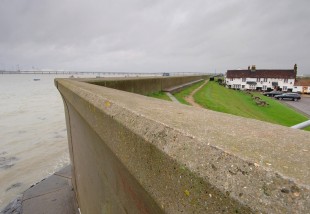Articles
Paradigms lost – why is concrete part of the adaptation solution?
Tweet
By Guy Thompson, Head of Architecture, Housing and Sustainability, The Concrete Centre
Addressing climate change and its impacts is a multifaceted problem spanning the present through to the longer term future. Unfortunately we need to be fighting a parallel war with the more immediate effects especially (but not exclusively) flooding and overheating as well as the longer term strategies.
Unfortunately the perfect storm of a wide range of issues and threats projected onto a complex present and future built environment, with an equally wide range of responsible agencies and participants exacerbates this problem.
None of this of itself is new if it were not made more difficult by the policy emphasis emerging from Europe (already in place in UK) of economic priority over both the social and environmental. This is understandable perhaps during times of economic crisis (ongoing) but dangerous in the long term if prioritization does not address the right issues at the right time.
The importance of building and infrastructure resilience to extreme weather events is now being recognized following events over recent years. As 99% of our built environment is built this includes both adaptation as well as design for resilience, however it also includes other key criteria and the ability to address these appropriately, such as security threats, natural disasters, fire risks, and natural resource depletion as well as an increasingly urban (green belt defined) environment together with an ageing population. Wider issues also being considered include energy, transport, ICT and water infrastructure.
So why is concrete a part of the solution? Flooding: for infrastructure interventions long term durability matched with economic advantage. For buildings it is the same. Overheating: there are the advantages of thermal mass to help regulate the temperature and save energy costs. Fire: incombustibility, gives both protection but also allowing the reuse of structure and time saving /shortening rehousing/reoccupation times. Natural disasters: concrete gives you a robust construction which gives protection from the effects of high winds and storms. Security: provides protected enclosure at low cost. Security of supply: a locally sourced and produced material in plentiful supply for thousands of years.
Energy: the concrete industry sustainability strategy publishes an annual Sustainability Report which is now in its 7th year and tracks progress in this field amongst a wide range of other metrics including transport and water. The latter two are work in progress with further data and better metrics yet to be agreed.
So which paradigms have been lost? Concrete is part of the solution and as recently confirmed by BRE at their Resilience 14 event, flood defence is not the only part of the solution and overheating now registers as a major issue for the future.
Leave a Reply